Pell Grant Funding Cut Puts the Squeeze on Low-Income Students
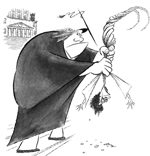 This past year the Bush administration changed the formula that is used to calculate Pell Grant awards. The new formula does not credit families for the state and local taxes they pay, with the result that families are considered to have more available money to pay for college than they did under the old formula. At the time of the change, it was estimated that 89,000 students would lose their eligibility for Pell Grants altogether and many thousands more would have their grants reduced. This past year the Bush administration changed the formula that is used to calculate Pell Grant awards. The new formula does not credit families for the state and local taxes they pay, with the result that families are considered to have more available money to pay for college than they did under the old formula. At the time of the change, it was estimated that 89,000 students would lose their eligibility for Pell Grants altogether and many thousands more would have their grants reduced.
Now The College Board has confirmed that the change has resulted in sharply reduced government aid for low-income students, a group in which blacks are a disproportionate percentage. The College Board reports that total Pell Grant awards in the 2005-06 academic year were $12.7 billion. This is down from $13.6 billion the year before. This is a drop in financial aid for poor students of more than 7 percent. The College Board also determined that the average Pell Grant award for low-income students was $2,354, down from $2,474 in the previous year.
While federal financial aid for low-income students under the Pell Grant program decreased, The College Board found that tuition costs rose by more than the rate of inflation. The average increase at community colleges in the 2005-06 academic year was 4.1 percent. At state-operated four-year colleges and universities, the average price hike was 6.3 percent. At private colleges and universities, comprehensive fees rose an average of 5.9 percent.
  |
“Henry Louis Gates Jr. has taken a field of study that, years ago, was floundering at Harvard and transformed it into the leading department of its kind in this country. He has been one of the world’s intellectual leaders, if not the intellectual leader, in shaping the entire field of African-American studies over the last quarter-century.”
— Derek Bok, interim president of Harvard University, announcing the appointment of Professor Gates as the Alphonse Fletcher Jr. University Professor, October 23, 2006 (See story below.)
|
Sharp Dropoff in Black First-Year Enrollments at the University of Michigan
 Next Tuesday, voters in Michigan will go to the polls to vote on the Michigan Civil Rights Initiative, a referendum that aims to ban race-sensitive admissions at the University of Michigan. Next Tuesday, voters in Michigan will go to the polls to vote on the Michigan Civil Rights Initiative, a referendum that aims to ban race-sensitive admissions at the University of Michigan.
At the moment, the University of Michigan is still able to use race as a positive factor in the admissions process. But black first-year enrollments dropped 25.5 percent this year from the 2005 level. In 2005 there were 443 black freshmen at the University of Michigan. This year there are only 330 black first-year students.
The University of Michigan appears to have one eye on the approaching referendum. Up until this year, the university had always supplied data to JBHE on the number of black students who applied to the university and the number who were accepted. This sensitive data, especially if it were to show a higher acceptance rate for blacks compared to whites, would undoubtedly be used by proponents of the Michigan Civil Rights Initiative to appeal to racist sentiments of some white voters in the state.
Historically Black Allen University Gives Cell Phones to All Students
 In an effort to boost campus security, all students, faculty, and staff at Allen University, the historically black educational institution in Columbia, South Carolina, have been issued cell telephones by the university. In a deal with Sprint, the university will include the cell phone charges as part of the university’s annual comprehensive fee. Students get 400 free minutes of daytime calling a month, unlimited night and weekend use, and unlimited text messaging. A university spokesperson said the monthly fee for the service for all 700 students and staff is more than $10,000. In an effort to boost campus security, all students, faculty, and staff at Allen University, the historically black educational institution in Columbia, South Carolina, have been issued cell telephones by the university. In a deal with Sprint, the university will include the cell phone charges as part of the university’s annual comprehensive fee. Students get 400 free minutes of daytime calling a month, unlimited night and weekend use, and unlimited text messaging. A university spokesperson said the monthly fee for the service for all 700 students and staff is more than $10,000.
The cell phones are equipped with global positioning system features which will be programmed into the university’s central computer. The location of students calling for help will be known immediately by campus security.
Scholarship Fund Drive to Honor African-American Admissions Officer at Harvard Quadruples Its Goal
 Three years ago Harvard University announced a campaign to endow a scholarship fund in the name of longtime African-American senior admissions officer David L. Evans. The target was to raise $250,000 to fund a single scholarship for a student from an underrepresented minority. Three years ago Harvard University announced a campaign to endow a scholarship fund in the name of longtime African-American senior admissions officer David L. Evans. The target was to raise $250,000 to fund a single scholarship for a student from an underrepresented minority.
To date, more than $1 million has been raised to fund the Evans Scholarship and three students at Harvard are currently having their tuition paid for by the fund. More than 600 alumni have directed their contributions to the fund.

Loyola Marymount University

Chair, African American Studies Department
The Bellarmine College of Liberal Arts at Loyola Marymount University seeks an advanced scholar of African American Studies to Chair, lead, and direct the department beginning August, 2007. The successful applicant must be eligible for tenure and rank at either Associate Professor or Professor.
We seek applicants with a compelling vision to enhance the department’s future growth. The candidate should possess a record of scholarly leadership and evidence of teaching, research and service excellence. A record of successful administrative experience, of mentoring and advising are helpful. The Chair will possess the communication and leadership skills necessary to continue building intercollegiate relationships on campus, promote departmental curricular growth, and lead the department in its commitment to the American Cultures Program.
A Ph.D. is required. Scholarly research in the humanities or social sciences, African American studies and/or studies of the African Diaspora is required.
Applicants should submit (1) a letter of application including a clear statement of how their research and teaching experiences match this position, and plans for research in a liberal arts environment, (2) a curriculum vitae including teaching experience and publication record, (3) a reflective statement on philosophy of teaching, (4) evidence of teaching excellence, (5) reprints/preprints, and (6) three letters of recommendation to Dr. Curtiss Rooks, African American Studies Department, One LMU Drive, Los Angeles, CA 90045-2659. For purposes of reappointment, tenure, and promotion, special emphasis is placed on teaching effectiveness, scholarly achievement, and service to the University. Salaries are competitive and commensurate with background and experience; benefits include a faculty housing assistance program.
Loyola Marymount University, a comprehensive university in the mainstream of American Catholic higher education, seeks professionally outstanding applicants who value its mission and share its commitment to academic excellence, the education of the whole person, and the building of a just society. LMU is an equal opportunity institution actively working to promote an intercultural learning community. Women and minorities are encouraged to apply. (Visit www.lmu.edu for more information.)
Applications and all supportive materials should be received by November 15, 2006. Review of applications will begin immediately.

Historically Black Medical School Opens New Center for Research on Racial Disparities in Women’s Healthcare
 Last week the Meharry Medical College in Nashville officially opened its Center for Women’s Health Research. The facility is the first in the nation devoted to research on health disparities affecting women of color. The center plans to conduct research in such areas as racial differences in reproductive health, HIV/AIDS, cardiovascular disease, and bone density. Last week the Meharry Medical College in Nashville officially opened its Center for Women’s Health Research. The facility is the first in the nation devoted to research on health disparities affecting women of color. The center plans to conduct research in such areas as racial differences in reproductive health, HIV/AIDS, cardiovascular disease, and bone density.
The new center is under the direction of Valerie Montgomery Rice, who also serves as senior vice president of health affairs and dean of the School of Medicine.
Blacks at Harvard Taking a Renewed Interest in Student Government
 Blacks are about 8 percent of the student body at Harvard University. But during the 2003-04 academic year, blacks made up only 4 percent of the Undergraduate Council, the main body of the student government at the university. That year, the “Vote or Die” campaign was established to increase minority representation on the Undergraduate Council. Blacks are about 8 percent of the student body at Harvard University. But during the 2003-04 academic year, blacks made up only 4 percent of the Undergraduate Council, the main body of the student government at the university. That year, the “Vote or Die” campaign was established to increase minority representation on the Undergraduate Council.
Vote or Die was very successful in encouraging more black students to seek seats on the council and helping them manage their election campaigns. In the 2004-05 academic year, the black presence on the Undergraduate Council jumped to 10 percent.
This year the newly elected Undergraduate Council is nearly 25 percent black. Four of the eight freshman representatives are African Americans.
Racial Disparity in Students Who Study Abroad
 Among the nation’s top-ranked universities, Duke University has one of the highest percentages of black students. Duke ranked third in this fall’s JBHE rankings of black freshmen at the nation’s 30 highest-ranked universities, behind only the University of North Carolina at Chapel Hill and Stanford. Among the nation’s top-ranked universities, Duke University has one of the highest percentages of black students. Duke ranked third in this fall’s JBHE rankings of black freshmen at the nation’s 30 highest-ranked universities, behind only the University of North Carolina at Chapel Hill and Stanford.
But a new study by Duke’s Office of Study Abroad finds that blacks make up only a small percentage of the students the university sends abroad to study. While blacks are 10.3 percent of the entire student body at Duke, they are only 5.7 percent of the 475 students who are studying abroad this semester.
Margaret Riley, associate dean for study abroad at Duke, told the university’s student newspaper, “There’s a high percentage of diverse students who are basketball and football players. Their schedule doesn’t permit study abroad.” She also said that the “close-knit” nature of black fraternities and sororities makes it more “socially difficult” for black students to commit to study abroad.
Money is also a factor. Students who are not on financial aid are more likely to study abroad than students who receive scholarship grants and loans from the university.
Henry Louis Gates Jr. Named to University Professorship at Harvard
 Henry Louis Gates Jr., who recently stepped down as chair of the Department of African and African-American studies at Harvard University, was named the Alphonse Fletcher Jr. University Professor. Gates is now one of 21 scholars who hold Harvard’s highest faculty position. A University Professorship permits a scholar to teach according to his or her own choice in a wide variety of disciplines. Henry Louis Gates Jr., who recently stepped down as chair of the Department of African and African-American studies at Harvard University, was named the Alphonse Fletcher Jr. University Professor. Gates is now one of 21 scholars who hold Harvard’s highest faculty position. A University Professorship permits a scholar to teach according to his or her own choice in a wide variety of disciplines.
Professor Gates is a graduate of Yale University. He holds a master’s and Ph.D. from Cambridge University. He joined the Harvard faculty in 1991.

Columbia College Chicago
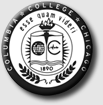
Assistant or Associate Director,
Center For Teaching Excellence
Columbia College Chicago invites applications and nominations for the position of Assistant/Associate Director of the Center for Teaching Excellence. The new Assistant/Associate Director will join a dedicated and innovative professional staff at a nationally respected Center for Teaching Excellence. S/he will be expected to research and promote best practices in effective, engaged teaching; design and deliver workshops and programming for faculty, including an orientation for new hires; consult and collaborate with Deans, Chairs, and individual faculty members on a wide range of pedagogical issues, including the evaluation of teaching and learning.
The successful candidate will have an MA, MFA, or PhD (preferred) in a discipline taught at Columbia; a record of excellence in teaching; demonstrated understanding of current best practices in teaching and learning; at least three years of experience designing and delivering programming to support faculty as teachers; substantive involvement with evaluating teaching effectiveness: familiarity with the needs of part-time faculty members; outstanding communication and collaborative skills; patience, flexibility, and persistence.
Columbia College Chicago encourages qualified female, GLBT, disabled, international and minority classified individuals to apply for all positions. We offer a competitive salary and an excellent benefits package. To ensure full consideration, applications should be received by December 1, 2006. Anticipated starting date is on or about June 1, 2007. Send cover letter addressing your qualifications for and interest in this particular position; a statement of philosophy of teaching; a current curriculum vitae; and the names and contact information of three references to:
David H. Krause
Assistant Vice President for Teaching and Learning Initiatives
Attention: Joanne Hinkel, CTE Program Manager
Columbia College Chicago
600 South Michigan Avenue / Faculty Center
Chicago, Illinois 60605
Electronic submissions as WORD attachments are encouraged and should be directed to: CTEsearch@colum.edu. For more info click here.

Appointments
 • Louis L. Cregler was named dean of the College of Medicine at Charles R. Drew University of Medicine and Science in Los Angeles. He was professor of medicine and deputy dean for academic affairs at the City University of New York Medical School. He received his medical training at the SUNY Health Science Center in Brooklyn. • Louis L. Cregler was named dean of the College of Medicine at Charles R. Drew University of Medicine and Science in Los Angeles. He was professor of medicine and deputy dean for academic affairs at the City University of New York Medical School. He received his medical training at the SUNY Health Science Center in Brooklyn.
• James D. Montgomery Sr. was appointed by Governor Bob Riley to the board of trustees of Alabama A&M University. Montgomery is an alumnus of the university. He served in the U.S. Army for 25 years and currently runs a small business in Anniston, Alabama.
 • Eric Troy was named director of the Bell National Resource Center on the African-American Male at Ohio State University. He was program manager for the Office of Minority Affairs at Ohio State. A graduate of Morehouse College, Troy holds a master’s degree in sports management from Ohio State. • Eric Troy was named director of the Bell National Resource Center on the African-American Male at Ohio State University. He was program manager for the Office of Minority Affairs at Ohio State. A graduate of Morehouse College, Troy holds a master’s degree in sports management from Ohio State.
Award
 • William A. Massey, the Edwin S. Wilsey Professor of Operations Research and Financial Engineering at Princeton University, is the recipient of the 2006 Blackwell-Tapia Prize from the Institute for Mathematics and Its Applications. The award is given for outstanding mathematical research and for mentoring minorities and women in the field of mathematics. • William A. Massey, the Edwin S. Wilsey Professor of Operations Research and Financial Engineering at Princeton University, is the recipient of the 2006 Blackwell-Tapia Prize from the Institute for Mathematics and Its Applications. The award is given for outstanding mathematical research and for mentoring minorities and women in the field of mathematics.
Grants
• Kansas State University received a three-year grant from the National Institutes of Health for a program to increase the number of black and other minority students pursuing degrees in the biomedical sciences. The program seeks to identify promising minority students at community colleges in Kansas and to encourage them to transfer to Kansas State to pursue a curriculum in the biomedical sciences.
• The University of South Florida College of Nursing received a $450,838 grant from the Florida Department of Education for a program to increase the number of black and other minority students pursuing doctoral degrees in nursing. Under the program, five nursing instructors from Bethune-Cookman College, the historically black educational institution in Daytona Beach, Florida, have enrolled in the doctoral program at the University of South Florida.
 • Howard University, the historically black educational institution in the nation’s capital, received a $1 million grant from the Amgen Foundation for a program to increase the number of students seeking degrees in the biomedical sciences. For the next four summers, 21 undergraduate students from colleges and universities across the United States will participate in a career development program at Howard University. • Howard University, the historically black educational institution in the nation’s capital, received a $1 million grant from the Amgen Foundation for a program to increase the number of students seeking degrees in the biomedical sciences. For the next four summers, 21 undergraduate students from colleges and universities across the United States will participate in a career development program at Howard University.
|
Two Scholars Discover What May Be the First True Novel Written by a Black Woman
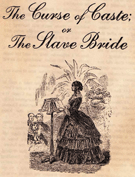 Professor William L. Andrews, the E. Maynard Adams Professor of English at the University of North Carolina at Chapel Hill, has produced a manuscript that he believes is the first novel published by a black woman in the United States. The Curse of Caste; or the Slave Bride was first published in 1865 as a serialized novel in the Christian Recorder, the national newspaper of the African Methodist Episcopal Church. The author of the novel was Julia C. Collins, a black woman who was a schoolteacher in Williamsport, Pennsylvania. She died of tuberculosis before completing her work. Professor William L. Andrews, the E. Maynard Adams Professor of English at the University of North Carolina at Chapel Hill, has produced a manuscript that he believes is the first novel published by a black woman in the United States. The Curse of Caste; or the Slave Bride was first published in 1865 as a serialized novel in the Christian Recorder, the national newspaper of the African Methodist Episcopal Church. The author of the novel was Julia C. Collins, a black woman who was a schoolteacher in Williamsport, Pennsylvania. She died of tuberculosis before completing her work.
Mitch Kachun, an associate professor of history at Western Michigan University in Kalamazoo, came across the serialized novel when he was conducting research on another topic. He contacted Professor Andrews, a well-known expert on early African-American literature. The two scholars edited the text, added two possible endings, and have published the work in a new book by Oxford University Press.
Little is known about the author Julia C. Collins, but census records confirm that she existed and was black. Andrews believes that two books written in the 1850s and rediscovered by Harvard’s Henry Louis Gates Jr., The Bondwoman’s Narrative by Hannah Crafts and Our Nig by Harriet E. Wilson, are largely autobiographical, although some fictional accounts may be included in each book. But the Collins work is clearly a complete work of fiction. Therefore, Andrews and Kachun believe that The Curse of Caste; or the Slave Bride is the first “true novel” published by a black woman.
Small Uptick in African-American Medical School Students
 Medical school applicants of all races rose by nearly 5 percent this year compared to a year ago. Since 2003 the number of students applying to medical school is up about 12 percent. Medical school applicants of all races rose by nearly 5 percent this year compared to a year ago. Since 2003 the number of students applying to medical school is up about 12 percent.
For African Americans, the number of medical school applicants peaked in 1996 at 3,524. In 2006 there were 2,906 black applicants to U.S. medical schools. Like applicants as a whole, there has been a slight increase in black applicants in the past several years.
Of the 2,906 blacks who applied to medical school in 2006, 1,219, or 42 percent, were accepted for admission. Nationwide about 47 percent of all medical school applicants were admitted.
There were 1,155 black students who enrolled in medical school in 2006. The number of new African-American medical school students has increased 6 percent since 2004.

Interdenominational Theological Center

Womanist Scholars Fellowship
The Womanist Scholars Program, a component of the Black Women in Church and Society Program (Jacquelyn Grant, PhD, Director) at the Interdenominational Theological Center in Atlanta, Georgia, provides affirming, creative and intellectual opportunities for womanist scholars to engage in scholarship. This appointment is given annually to two Visiting Scholars who have done significant research on issues concerning Black women, religion and spirituality. The Womanist Scholars Program is designed to assist Black women scholars seeking sabbatical or independent support for a specific research project. Requirements include one academic year in residence along with teaching (one course), (one public) lecture, research and writing for publication. It awards a $37,500 fellowship.
Applicants must submit: a completed application form; research prospectus (not to exceed four typed pages) outlining the intended research project with the proposed methodology and the project’s significance for the academic, religious and larger communities; one page narrative describing your philosophy of and commitment to womanist scholarship; a course proposal; writing sample (published or unpublished); current curriculum vitae and three letters of reference.
For information, contact Marion R. Pierre, Program Administrator, ITC-BWCS, 700 Martin Luther King, Jr. Dr. SW, Atlanta, Georgia 30314. Call 404-527-5713 or email mpierre@itc.edu, www.itc.edu/pages/wsp/WSPHome.htm.
The application and all supporting materials must be postmarked by December 8, 2006.

Survey Finds Business School Deans Believe a Great Deal of Effort Is Needed to Prepare Their Students for America’s Racially Diverse Work Force
 A survey of business school deans conducted for the Ph.D. Project finds that 52 percent of the deans believe business schools are not doing an adequate job preparing their graduates to handle racial diversity issues in the workplace. A majority of the deans also responded that higher levels of minority faculty members have had a positive impact on recruiting black and other minority students and on the education and career mentoring of these students. A survey of business school deans conducted for the Ph.D. Project finds that 52 percent of the deans believe business schools are not doing an adequate job preparing their graduates to handle racial diversity issues in the workplace. A majority of the deans also responded that higher levels of minority faculty members have had a positive impact on recruiting black and other minority students and on the education and career mentoring of these students.
The Ph.D. Project is an organization seeking to increase the number of black and other minority faculty at the nation’s business schools. It is the position of the organization that hiring more minority professors will help business schools better prepare their graduates for the increasingly diverse work force that they will manage in the corporate world. Since the Ph.D. Project’s inception in 1994, the number of minority business school faculty has nearly tripled from 294 to 812. In addition, there are about 400 minority students in the business Ph.D. pipeline, most of whom will be seeking jobs in the academic world over the next five years.
Saint Augustine’s Students on the March
 About 125 students at Saint Augustine’s College, the historically black educational institution in Raleigh, North Carolina, mounted a protest march from campus to the State Capitol building. The students demanded that action be taken against a mold problem which the students claim is causing health problems on campus. The college said that there had been a mold problem but it has been corrected. Dianne Boardley Suber, president of the college, admitted to the Raleigh News & Observer, “We have old buildings, they do get damp. But the problem is mostly mildew.” About 125 students at Saint Augustine’s College, the historically black educational institution in Raleigh, North Carolina, mounted a protest march from campus to the State Capitol building. The students demanded that action be taken against a mold problem which the students claim is causing health problems on campus. The college said that there had been a mold problem but it has been corrected. Dianne Boardley Suber, president of the college, admitted to the Raleigh News & Observer, “We have old buildings, they do get damp. But the problem is mostly mildew.”
The students also said they had concerns about campus safety. Student leaders claimed that the administration did not take any action after a reported gang-related brawl occurred on campus. The students also claimed that their privacy was routinely violated by campus security officers who allegedly routinely search student dormitory rooms for drugs.
  |
60% The proportion of the average published price of tuition, fees, and room and board at public four-year universities covered by the maximum federal Pell Grant in 1986.
33% The proportion of the average published price of tuition, fees, and room and board at public four-year universities covered by the maximum federal Pell Grant in 2006.
source: The College Board
|
Tougaloo Nine Receive Keys to the City of Jackson, Mississippi
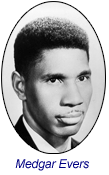 Forty-five years ago in 1961, in a carefully organized protest orchestrated by Medgar Evers, nine black students from Tougaloo College in Mississippi entered the public library reserved for blacks in Jackson, Mississippi, seeking leisure reading works that they knew were not included in the library’s collection for African Americans. Forty-five years ago in 1961, in a carefully organized protest orchestrated by Medgar Evers, nine black students from Tougaloo College in Mississippi entered the public library reserved for blacks in Jackson, Mississippi, seeking leisure reading works that they knew were not included in the library’s collection for African Americans.
Evers’ group then proceeded to the library in the city reserved for whites, where they knew the books were housed. The police were called and the students were arrested and charged with breach of the peace. They were held for 32 hours, fined $100 each, and given 30-day suspended sentences. It was the first major act of civil disobedience by black protesters in the Mississippi capital. Lunch counter sit-ins and voter registration drives soon began in the city. Medgar Evers was assassinated in 1963.
Late last month, the city of Jackson presented the Tougaloo Nine with keys to the city at a banquet for alumni held on the Tougaloo campus.

Ohio State University

Faculty Positions,
College of Education & Human Ecology
Department of Human Development & Family Science
The Ohio State University announces the opening of two 9 month, tenure track, open rank faculty positions in the Family Science and Child Development areas. Requirements: Family Science: doctorate in Family Science or related area; research and teaching excellence in family and couple processes that contribute problematic behavior (violence, mental health, substance use, crime, obesity, sexual behavior, etc.). Child Development: doctorate in Child Development, Developmental Psychology or related area; research and teaching excellence related to the impact of environment, community, and family factors on the social or emotional development or adjustment of children. Salary commensurate with qualifications. For additional information about the college, department, or program areas, visit http://ehe.osu.edu/.
Submit letter of application, CV, and names of three (3) references to:
Natasha Slesnick, Chair, Search Committee
The Ohio State University
Department of Human Development & Family Science
1787 Neil Avenue
Columbus, OH 43210
Email: Slesnick.5@osu.edu
Telephone: (614-247-8469)
Evaluation will commence upon receipt of applications and continue until position is filled.
To build a diverse workforce, Ohio State encourages applications from minorities, veterans, women, and individuals with disabilities. EEO/AA employer.

Syracuse Honors Nine Collegiate Football Players Who Made a Stand Against Racism in 1970
 In 1970 nine African-American football players at Syracuse University quit the team to protest racist treatment they received on campus and in the football program. There were 11 black players on the team at the time. In 1970 nine African-American football players at Syracuse University quit the team to protest racist treatment they received on campus and in the football program. There were 11 black players on the team at the time.
The nine athletes claimed that coaches were insensitive to black athletes, would not let them compete for certain positions, did not offer adequate academic support for black athletes, and did not give them proper medical care. The students were also concerned that there were no African-American coaches. The nine black athletes gave up their football scholarships.
The protest by the black football players prompted an investigation that called for many changes at Syracuse University, which resulted in increased racial diversity on campus and more opportunities for African Americans.
Late last month the university gave the nine football players the Chancellor’s Medal, one of the university’s highest honors. Also, they were presented with their varsity jackets during a halftime ceremony at a football game.
Photographs of African Americans to Be Auctioned to Establish a College Scholarship Fund
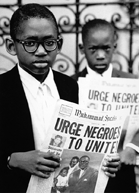 The Kamoinge Workshop was a group of photographers formed in New York City in 1963 to encourage more African Americans to enter the field of photography. Now the works of many founding members of the workshop have become highly valued in the art world. Most of the works are photographs of African Americans from the second half of the twentieth century. The Kamoinge Workshop was a group of photographers formed in New York City in 1963 to encourage more African Americans to enter the field of photography. Now the works of many founding members of the workshop have become highly valued in the art world. Most of the works are photographs of African Americans from the second half of the twentieth century.
Next week a gala reception and art auction will be held in Chicago. Several members of the Kamoinge Workshop have donated some of their works. The proceeds from the auction will be used to establish the Kamoinge-Ferman Scholarship at Columbia College Chicago. The scholarship will provide funds for international study opportunities for a student at the college who has excelled in African-American studies.
The accompanying photograph is by Albert Fennar, who learned the art of photography while in the Air Force in Japan. He now lives in Long Beach, California.
All of the photographs that will be auctioned for the benefit of the Columbia College scholarship fund can be viewed by clicking here.
In Memoriam
Julius A. Lockett (1910-2006)
Julius A. “Skipper” Lockett, the longtime bursar and vice president of business and finance at Morehouse College, died of congestive heart failure at a nursing home near Birmingham, Alabama. He was 96 years old.
A Morehouse College graduate who held an MBA, Lockett started his career as a math teacher in high school. In 1958 he became bursar at Morehouse. All Morehouse students had to get the approval of Lockett, who certified that they had paid their account in full before they were permitted to take their final examinations.
Also, in 1958, Lockett became treasurer of the Morehouse alumni association, a post he held for three decades. He also served for 35 years as the treasurer for the Kappa Alpha Psi fraternity.
Edward Bogier Jr. (1940-2006)
Edward Bogier Jr., assistant to the vice president of finance and management at Morgan State University, died as a result of an aneurysm last month at the University of Maryland Medical Center. He was 66 years old.
Born in Brooklyn, Bogier grew up in Baltimore and earned a bachelor’s degree in urban planning from Morgan State University. He later earned two master’s degrees, one in management from Morgan State and the other in information systems from the University of Maryland.
He worked in the administration of Baltimore mayor Donald Schaefer before becoming director of facilities management for the Enoch Pratt Public Library. He later accepted a position in the Morgan State administration where he remained until his retirement a year ago.

Ursinus College

Ursinus Fellow in the Liberal Arts
Ursinus College invites applications for the Ursinus Fellow in the Liberal Arts, a new two-year visiting assistant professorship in liberal studies beginning Fall 2007. Ph.D. required. The successful candidate will teach the College’s liberal studies seminar, The Common Intellectual Experience (CIE), a two-semester course taken by all first-year students and taught by faculty members from all disciplines. An interdisciplinary course, CIE focuses on fundamental questions of the human condition by exploring foundational and contemporary texts and artistic productions. Teaching will also include an upper-level course and a seminar/workshop series for faculty colleagues in the candidate’s area of expertise. Candidates must have expertise in areas or texts that will enrich CIE and broaden faculty knowledge. Candidates should be teachers/scholars who demonstrate a serious appreciation for interdisciplinary teaching and a love of foundational texts germane to the liberal arts.
Ursinus College, founded in 1869, is a highly selective, national ranked, independent, coeducational liberal arts college of 1600 students, located 25 miles from center city, Philadelphia. Send letter of application, evidence of teaching effectiveness, current CV, scholarly work, and three letters of recommendation to:
Professor Steven J. Hood
Department of Politics
Ursinus College
P.O. Box 1000
Collegeville, PA, 19426-1000.
Ursinus College is an AA/EO employer. Women and minorities are invited to apply. Review of completed applications will begin December 1, 2006 and continue until the position is filled.

|
 .
.